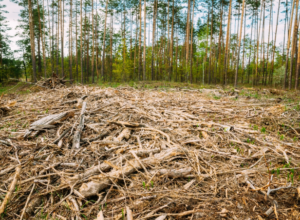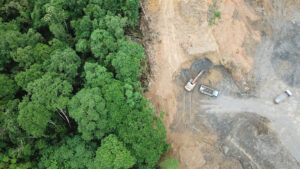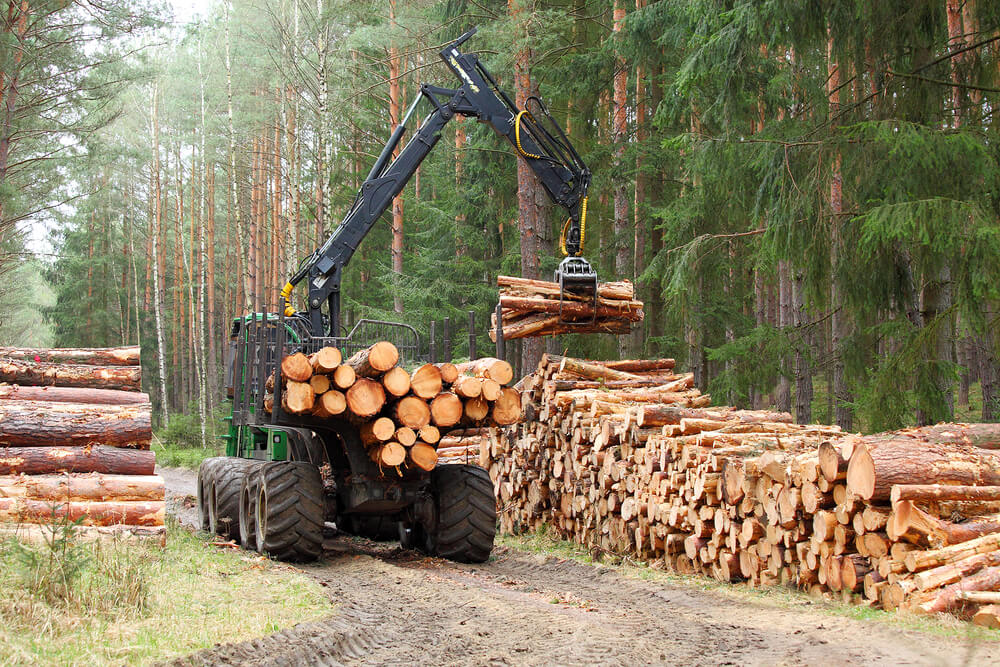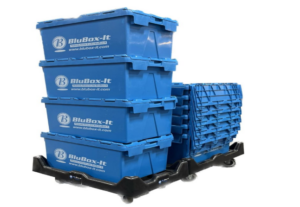
Impact of Cardboard Boxes on Deforestation: Why is It Necessary to Avoid Using Them
In today’s fast-paced world, the impact of our choices on the environment is more critical than ever. One such choice, often overlooked, involves the humble cardboard box. Commonly used for moving, these boxes have become a staple in our lives.
However, the environmental cost of using cardboard moving boxes is a concern that warrants attention.
In this blog, we will explore the impact of cardboard boxes on deforestation and discuss why it’s essential to seek alternatives.
Deforestation and Its Harmfulness
In the contemporary world, the issue of deforestation has taken centre stage, raising significant concerns about its widespread impact. The relentless clearing of forests poses a serious threat to the environment, biodiversity, and the overall well-being of the planet.
The consequences of deforestation are far-reaching, contributing to climate change, loss of habitat for countless species, disruption of ecosystems, and a decline in air and water quality.
The demand for timber, agricultural expansion, and urbanization are among the leading drivers of this destructive practice.
As we witness the harmful effects of deforestation unfolding, it becomes imperative for individuals, communities, and nations to prioritize sustainable practices, afforestation initiatives, and conservation efforts.
Only through collective and conscientious actions can we hope to mitigate the harmfulness of deforestation and ensure a healthier, more balanced coexistence with nature.
WHAT ARE THE MAIN CAUSES OF DEFORESTATION?
Deforestation, a critical environmental issue, continues to plague our planet, posing severe threats to biodiversity and climate stability.
In this comprehensive guide, we will learn the primary culprits behind this rampant destruction, aiming to provide valuable insights into the intricate web of factors that contribute to deforestation.
INDUSTRIAL AGRICULTURE
 One of the leading causes of deforestation is industrial agriculture. Some 80% of global deforestation is a result of agricultural production, which is also the leading cause of habitat destruction.
One of the leading causes of deforestation is industrial agriculture. Some 80% of global deforestation is a result of agricultural production, which is also the leading cause of habitat destruction.
The relentless demand for agricultural expansion has driven large-scale clearing of forests to make way for vast monoculture fields.
This method prioritizes efficiency over sustainability, causing irreparable damage to natural ecosystems. The extensive use of heavy machinery and chemical inputs further exacerbates the ecological impact, leaving ecosystems degraded and vulnerable.
WILDFIRES
Uncontrolled wildfires represent another significant force driving deforestation. Whether ignited by human activities or natural causes, These big fires can spread fast and burn up huge forests, destroying lots of different plants and animals.
Afterwards, there are empty lands without the diverse plants and animals that used to live there.
MINING
 The extraction of valuable resources through mining is a never stopping contributor to deforestation. Mining operations necessitate the clearing of large forested areas to access underground deposits.
The extraction of valuable resources through mining is a never stopping contributor to deforestation. Mining operations necessitate the clearing of large forested areas to access underground deposits.
This not only disrupts ecosystems but also leads to soil erosion and water pollution, making the environmental damage worse.
EXPANSION AND INFRASTRUCTURE
Rapid urbanization and infrastructure development play a pivotal role in deforestation. The relentless pursuit of expansion and infrastructure demands the clearing of forests to accommodate growing populations and build roads, highways, and other essential structures.
This unchecked development further fragments habitats, disrupting wildlife and pushing many species towards endangerment.
CLIMATE CHANGE
While deforestation contributes to climate change, the reverse is also true. Climate change intensifies the impact of deforestation by altering precipitation patterns and increasing the frequency and severity of extreme weather events.
These changes stress forest ecosystems, making them more susceptible to diseases and pests, accelerating the rate of deforestation.
BUILDING FACTORIES, BUSINESSES, OR HOMES
The demand for new spaces for building factories, businesses, or homes has become a significant driver of deforestation.
As urbanization surges, natural landscapes are sacrificed for concrete jungles, leading to the loss of crucial habitats and biodiversity.
Sustainable urban planning and responsible construction practices are essential to mitigate this destructive trend.
TIMBER LOGGING
 Timber logging, both legal and illegal, remains a potent force behind deforestation. The demand for wood products fuels extensive logging operations that strip forests of their valuable resources.
Timber logging, both legal and illegal, remains a potent force behind deforestation. The demand for wood products fuels extensive logging operations that strip forests of their valuable resources.
Sustainable forestry practices are crucial to balance the need for wood with the imperative to preserve our forests. Timber logging refers to the practice of cutting down trees to obtain wood.
This process is a significant concern when discussing deforestation because it directly contributes to the reduction of forested areas.
Various industries, including those relying on timber for production, are key contributors to this issue.
The Rise of Timber Logging for Cardboard Boxes
In recent years, there has been a surge in the demand for cardboard boxes driven by the e-commerce boom.
As businesses strive to meet the packaging needs of online orders, the reliance on timber for cardboard production has intensified.
This surge in demand is, unfortunately, linked to the rise in timber logging activities, putting immense pressure on our forest ecosystems.
Carbon Footprint Concerns
The carbon footprint associated with the timber logging industry further exacerbates the environmental impact.
Trees play a crucial role in absorbing carbon dioxide, acting as a natural buffer against climate change.
As logging operations escalate, this carbon-absorbing capacity diminishes, contributing to the ongoing challenges of global warming.
The Domino Effect on Biodiversity
The widespread logging for cardboard boxes disrupts the natural habitats of countless species, pushing many to the brink of extinction.
Forests are intricate ecosystems where each species plays a crucial role in maintaining the delicate balance.
Timber logging upsets this equilibrium, leading to a cascade effect on biodiversity.
Threats to Endangered Species
Many endangered species, reliant on these forests for survival, face an unprecedented threat due to the encroachment of logging activities.
From mammals to birds and insects, the impact is felt across diverse taxa, posing a serious threat to the overall biodiversity of our planet.
Why Are Cardboard Boxes a Cause of Deforestation?
Cardboard boxes are a big reason for cutting down too many trees, which leads to deforestation. Trees are chopped down to make paper and cardboard. Every year, millions of these boxes are made and used for packing stuff.
Because so many people and companies use these boxes, a lot of trees are needed to keep up with the demand.
This means more forests are cleared, and that’s bad for the environment. Trees are important because they give us air to breathe, help control climate, and provide homes for animals.
When we cut down too many trees for things like cardboard boxes, it harms our planet. To help, we can recycle boxes and use them more than once, reducing the need to cut down more trees.
Sustainable Alternatives and Solutions
Promoting Responsible Logging Practices
The timber logging industry must transition towards responsible and sustainable practices.
This includes implementing selective logging techniques, reforestation efforts, and adhering to strict regulations to minimize the environmental impact.
Promoting Eco-Friendly Packaging
Businesses can contribute significantly to the solution by adopting eco-friendly packaging alternatives.
From recycled materials to innovative designs that require less raw material, the packaging industry can play a pivotal role in reducing the demand for timber logging.
Moving Towards a Sustainable Solution
The good news is that there are sustainable alternatives to cardboard moving boxes that can significantly reduce our environmental footprint.
Renting reusable moving boxes is an innovative and eco-friendly solution that is gaining popularity, especially in urban areas like Chicago.
These boxes are made from durable plastic, designed to be used multiple times, and when they’ve reached the end of their life cycle, they can be recycled to make new boxes.
Reusable plastic moving boxes
Reusable plastic moving boxes are an eco-friendly and efficient alternative to traditional cardboard boxes for moving purposes.
These boxes are designed to withstand the rigors of multiple uses, making them a sustainable choice for individuals and businesses alike.
Here are some key advantages and considerations associated with reusable plastic moving boxes:
Advantages:
Durability: Reusable plastic moving boxes are sturdier and more durable than cardboard boxes. They are less likely to tear or crush, providing better protection for your belongings during the moving process.
Environmentally Friendly: Since these boxes are designed for multiple uses, they contribute to reducing the demand for single-use cardboard boxes and help minimize waste. Many reusable plastic boxes are made from recyclable materials, further reducing their environmental impact.
Time and Cost Savings: Unlike cardboard boxes, which need to be assembled and taped, reusable plastic moving boxes are often stackable and come with attached lids. This design makes them quicker to pack and easier to stack, saving both time and money during the moving process.
Consistency in Size and Shape: Reusable plastic boxes typically have standardized dimensions, making it easier to organize and maximize space during transportation. This consistency helps optimize the packing and unpacking process.
Water-Resistant: Plastic moving boxes are generally water-resistant, providing an added layer of protection for your belongings in case of unexpected weather conditions during the move.
No Need for Tape: Since these boxes come with integrated lids, there is no need for additional tape. This not only saves money but also eliminates the hassle of dealing with tape during packing and unpacking.
Why Reusable Moving Boxes?
Environmental Impact:
By renting reusable moving boxes, you’re directly contributing to the reduction of deforestation and minimizing waste, making it one of the top reasons to use reusable moving boxes.
These boxes can be used hundreds of times before needing to be replaced, drastically reducing the demand for new cardboard and, consequently, the need to cut down trees.
Cost-Effective:
In the long run, renting reusable moving boxes can be more cost-effective than buying new cardboard boxes every time you move.
Plus, you don’t have to deal with the disposal of cardboard boxes after your move.
Durability and Convenience:
Plastic moving boxes are more durable than cardboard boxes, protecting your belongings better. They are also stackable and easy to transport, making your moving process smoother and more efficient.
Supporting Local Businesses:
By choosing to rent moving boxes, you’re also supporting local businesses that provide these eco-friendly solutions, contributing to the local economy.
Company Promoting Reusable Moving Boxes?
 For those in the Chicago area, BluBox-IT offers a convenient and eco-friendly solution for your moving needs.
For those in the Chicago area, BluBox-IT offers a convenient and eco-friendly solution for your moving needs.
By choosing blubox-it.com, you’re not just making your move easier; you’re also making a conscious decision to protect our planet.
Their durable, reusable boxes are a testament to how we can all contribute to a more sustainable future by making small changes in our everyday lives.
Conclusion
The impact of cardboard boxes on deforestation is a significant environmental issue that we can no longer afford to overlook. As individuals and communities, it’s our responsibility to seek and support sustainable alternatives.
Renting reusable moving boxes is a practical, eco-friendly solution that not only benefits the environment but also offers convenience and cost savings.